This creamy, hearty, cheesy Polenta Recipe will delight your heart and your taste buds—it’s perfect with meatballs, pasta sauce, and more.
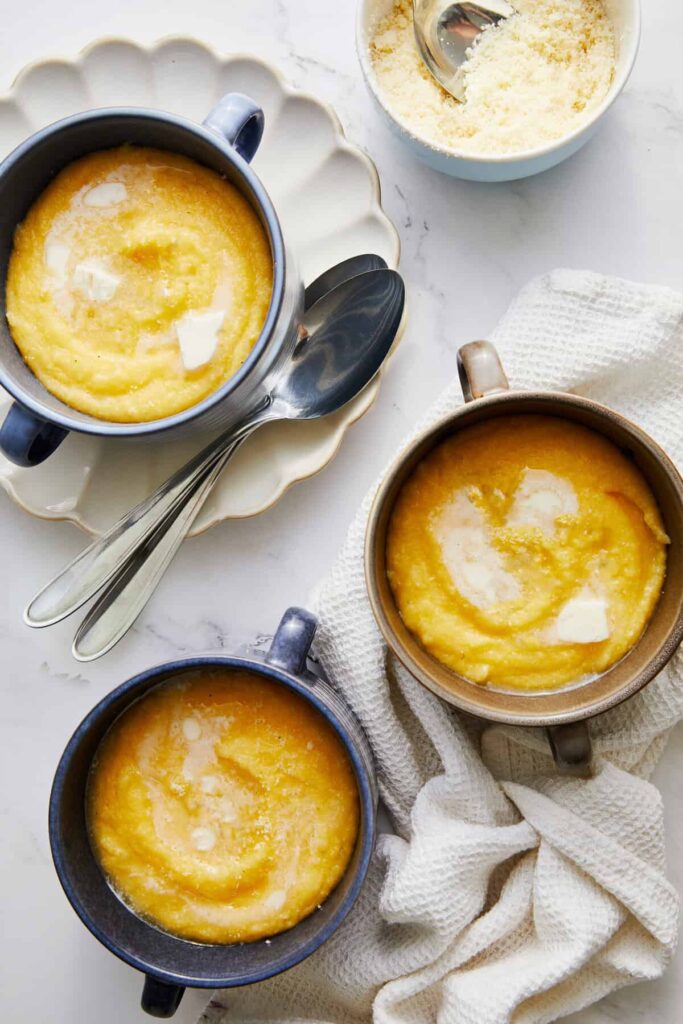
If you read my posts on FFF, you know I grew up in the South around an ocean of seafood and had my pick of classic Cajun delicacies. But there’s one ingredient that showed up more in my childhood than others. For every bowl of red beans and rice I ate, there was a pile of cornbread muffins waiting in the kitchen to crumble on top, and pretty much every fried shrimp I ate was hugged by a cornmeal-based batter. And grits—my favorite breakfast for many years—is made of ground corn, too.
Cornmeal sits firmly near the heart of Southern cuisine, and it’s as familiar to me as the rooms in my parents’ house. So, imagine my surprise when I started working at an Italian restaurant and realized that the Italian polenta—which they sliced, floured, and fried to put over a pool of red sauce—was, in fact, made of ground corn. A whole new way to eat cornmeal! That humble dish became my go-to work dinner for at least a year.
This polenta recipe may seem like a basic way to prepare it, but let me tell you—you don’t need much else to make it shine. Butter, Parmesan cheese, and a little salt go a long way toward a satisfying, hearty bowl of creamy polenta. You can add anything to it that you’d add to a bowl of grits, and you can also add a spoonful of your favorite pasta sauce and a few meatballs for a whole meal. Just talking about it makes me hungry, and soon, it’ll do that to you, too.
Is This Polenta Recipe Healthy?
Polenta itself is a minimally processed ground corn product that contains some fiber, protein, and plenty of carbs. It’s naturally low in fat and has a moderate calorie content per serving. In itself, polenta is not an unhealthy food. Just like grits, the nutritional red flags arise when you add all the tasty things to it! There’s a significant amount of butter and Parmesan cheese in this recipe, both of which add saturated fat and calories to the dish.
If you want to cut down on saturated fat, you could reduce the butter and add in some olive oil to make up for it. To make this a vegan dish, use olive oil instead of butter, and swap out Parmesan cheese for something like nutritional yeast, which helps mimic that cheesy flavor without the dairy. You could also consider mixing in some vegetables—or at least serving some on the side—for some added nutritional value. Polenta should be gluten-free, but make sure to check the package if you’re extra-sensitive to gluten.
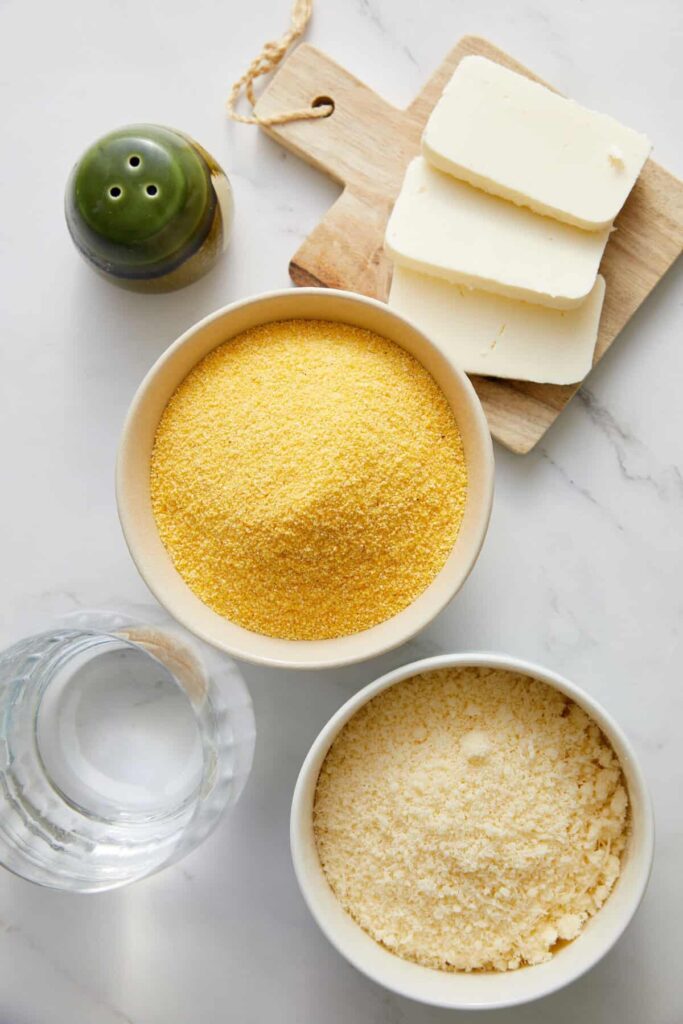
Polenta Vs. Grits
The Southerners reading along might be wondering what the big deal is about polenta when they’ve been eating grits their whole lives. Well, they are different in small ways, but the differences between stone-ground grits and traditional polenta are small enough to make them nearly interchangeable.
Grits are usually made with white dent corn, but grits can also be made with blue or yellow corn. They can either be stone-ground (“old-fashioned”), which are coarse in texture, or quick-cooking grits, which are finely milled and produce smoother grits. Grits tend to have a stronger corn flavor than polenta, particularly stone-ground grits.
Polenta is made with medium or coarsely ground yellow flint corn, typically. Flint corn has a lower starch content than dent corn, so cooked polenta is slightly less creamy than cooked grits.
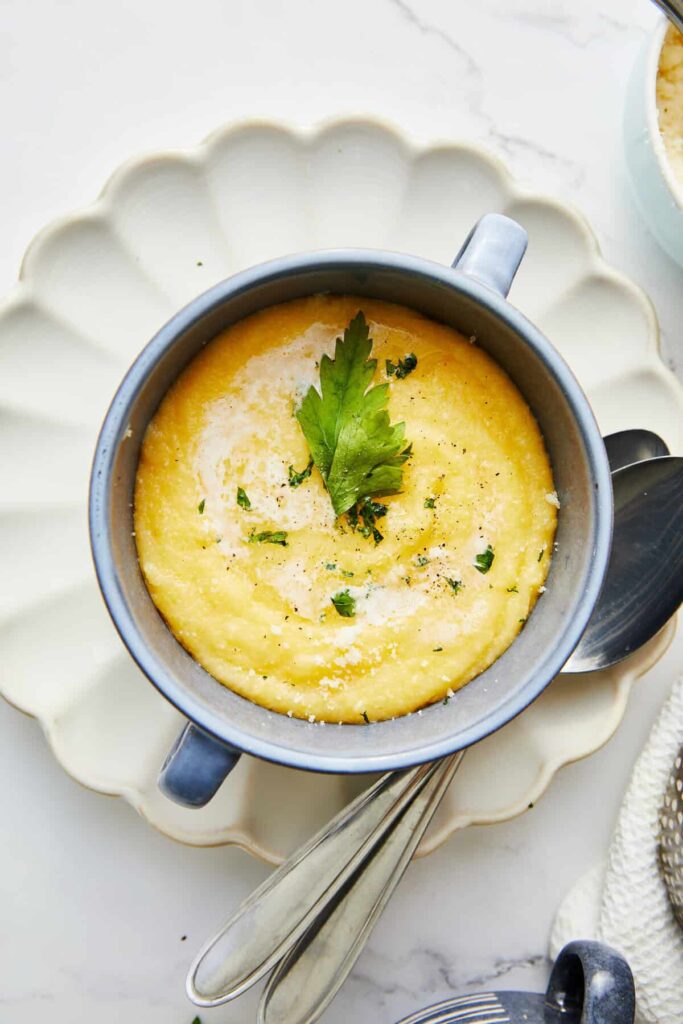
How Do I Store Leftovers?
Polenta is definitely at its best right after cooking, but you could refrigerate or freeze this recipe if you have leftovers. Just be sure your polenta cools completely before transferring it to an airtight container. Generally, polenta lasts up to 4 days in the fridge and 3 months in the freezer. To freeze it, store it in a freezer-safe container or bag with as little trapped air as possible. Thaw it in the fridge overnight before reheating.
To reheat your thawed polenta, pop it in the microwave or put it on a low heat setting on the stovetop. In either case, you’ll need to stir in a little water or broth to help smooth out the texture.
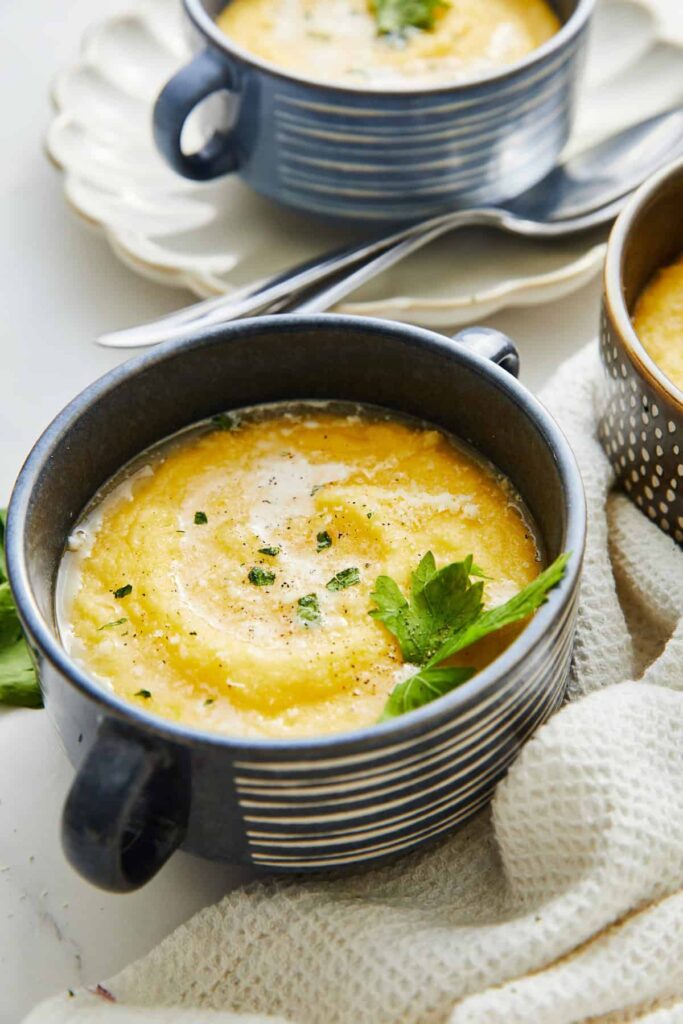
Serving Suggestions
Due to its Italian roots, polenta frequently appears as a side dish in Italian cuisine. The buttery and creamy flavors make polenta an easy pairing with dishes like Air-Fryer Chicken Parmesan, Easy Paleo Italian Meatballs In The Instant Pot, and Spaghetti Squash Lasagna. It’s also common to top polenta with braised beef, mushroom, or pork ragù for a savory and saucy dinner.
However, you don’t have to cook up Italian fare to find a pair for your polenta. Honestly, you could use polenta as a side anywhere you’d usually serve mashed potatoes. For instance, if you love seafood, polenta is also a great choice to complement bright, citrusy notes in recipes like Lemon Pepper Shrimp, for example.
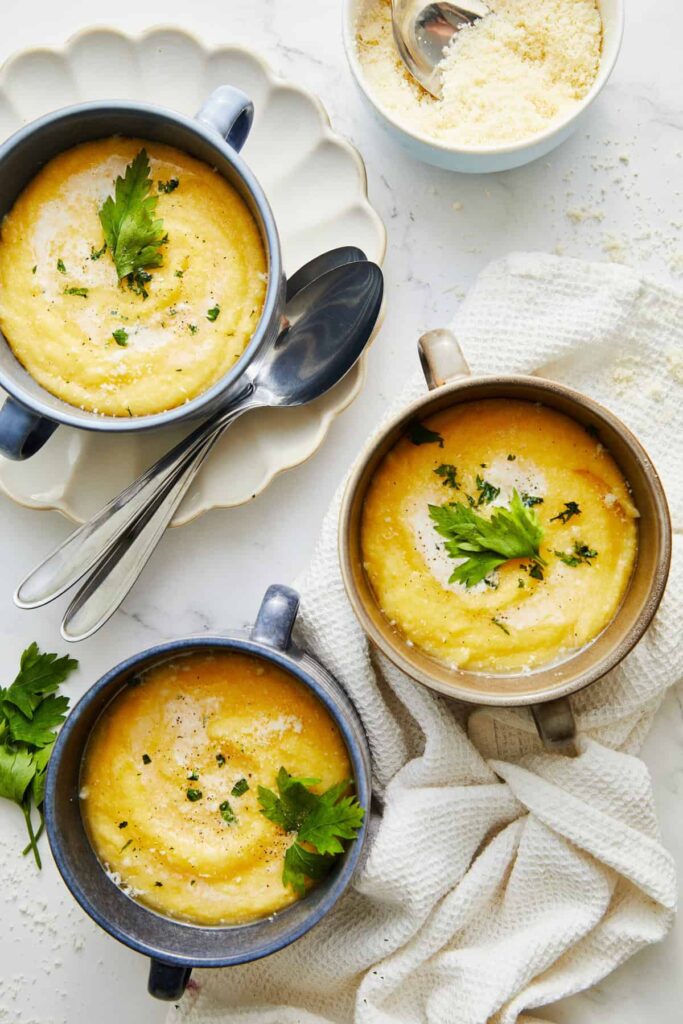
Recipe
Ingredients
- 4 cups water
- 1 teaspoon salt
- 1 cup cornmeal fine or coarse
- 3 tablespoons unsalted butter
- ½ cup grated Parmesan cheese
Instructions
- In a medium saucepan, bring the water and salt to a boil over high heat.
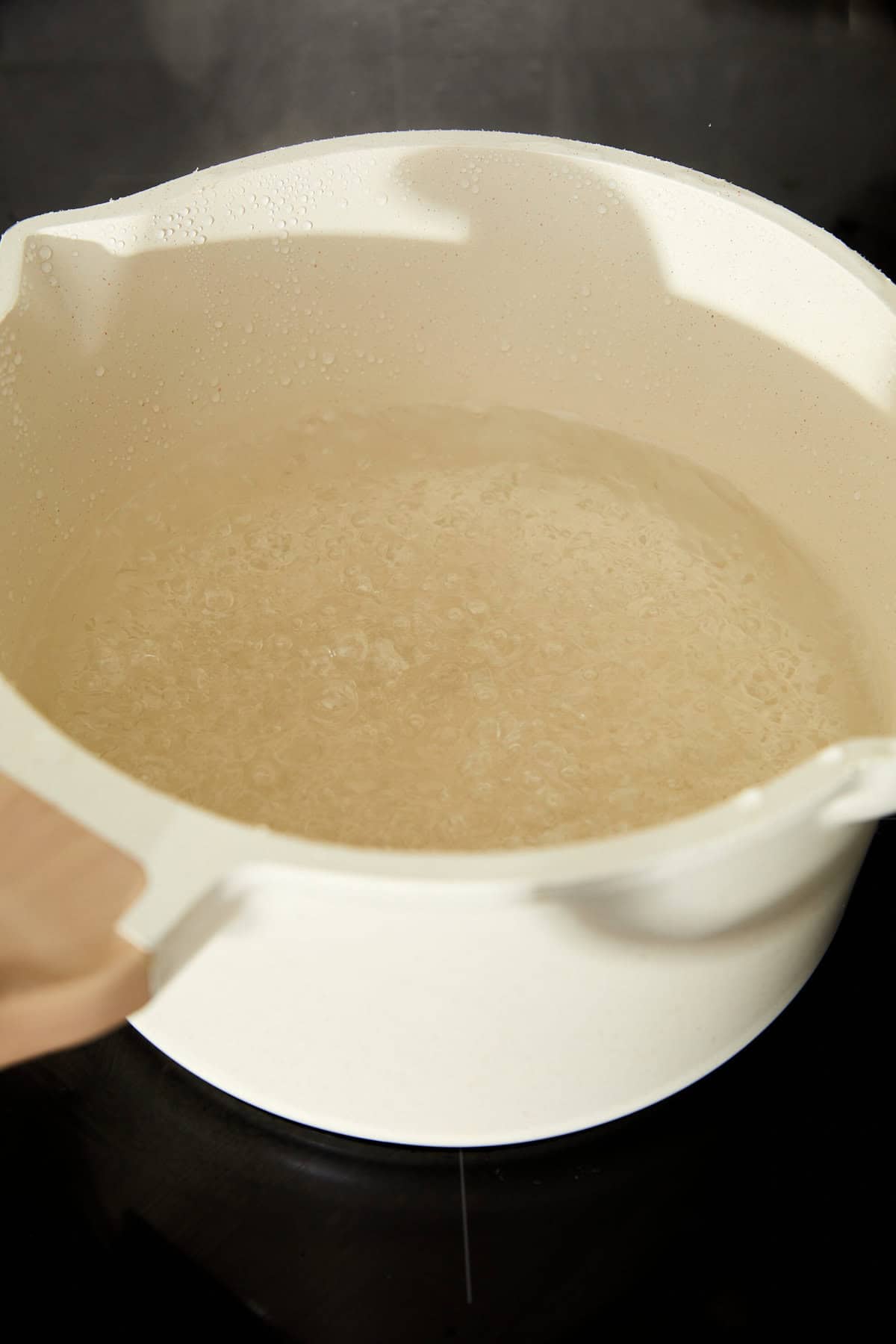
- Gradually whisk in the cornmeal and reduce the heat to low. Cook, stirring frequently, until the polenta thickens and becomes creamy, about 30 minutes.
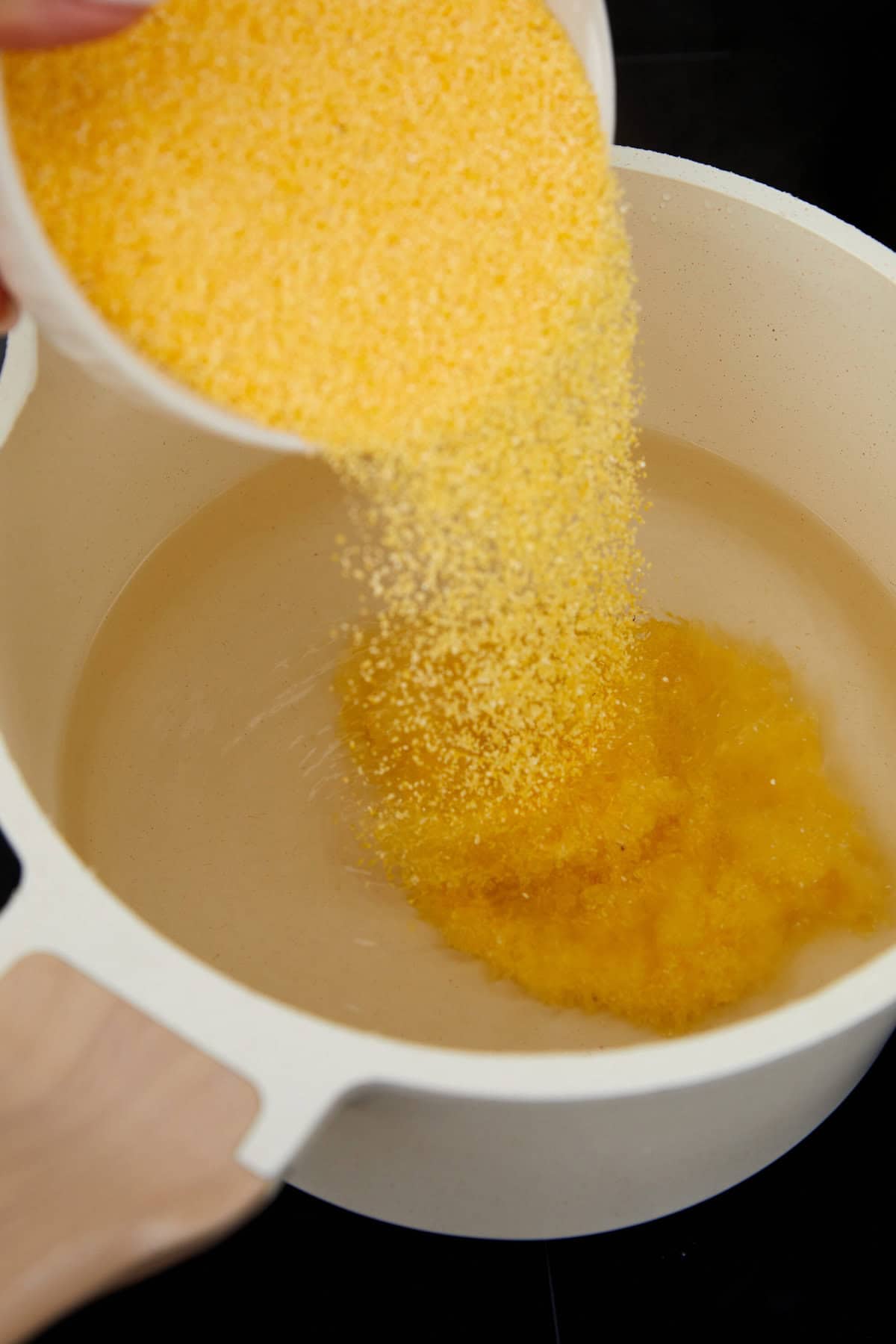
- Remove from heat, then stir in the butter and Parmesan cheese until fully melted. Serve immediately.
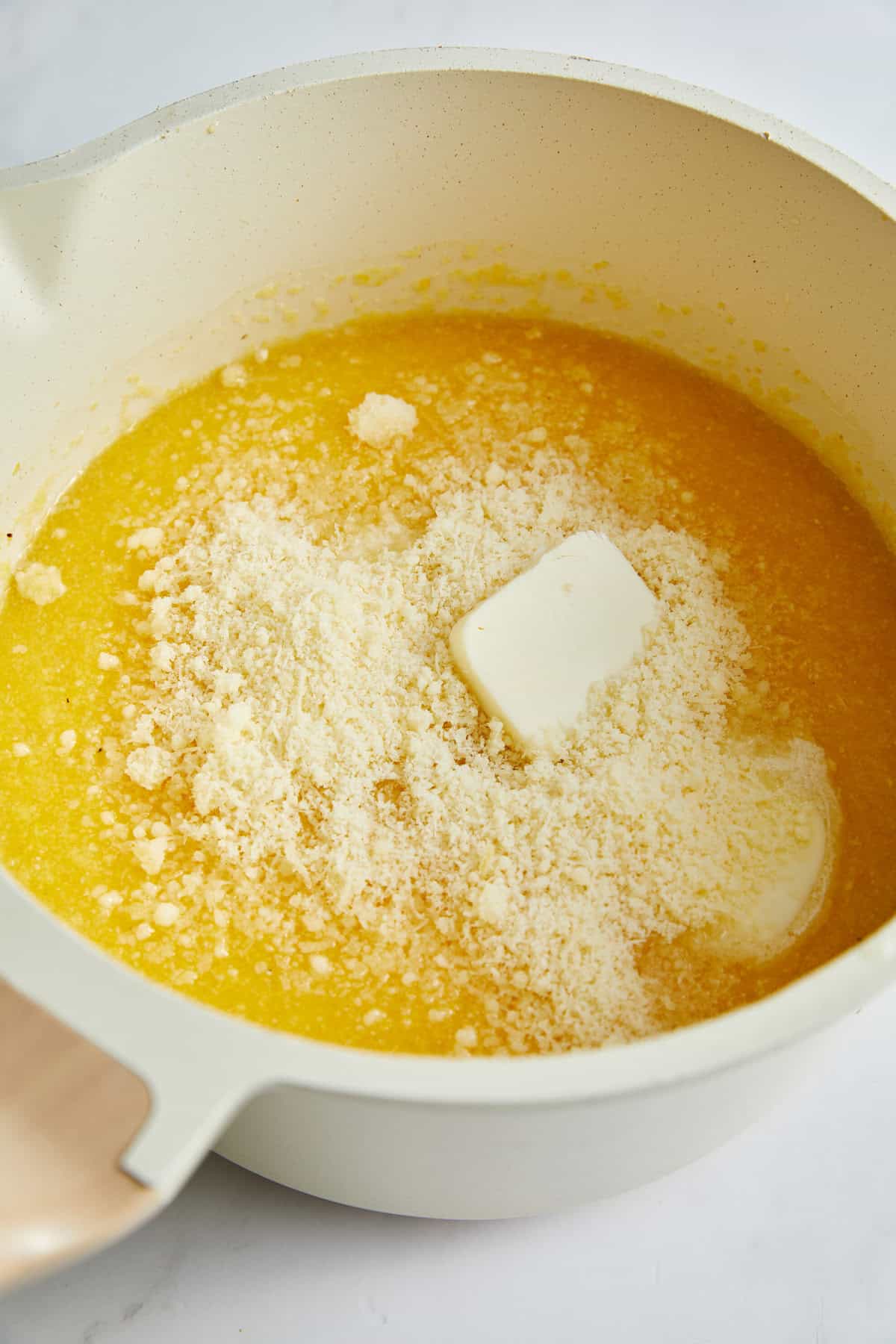
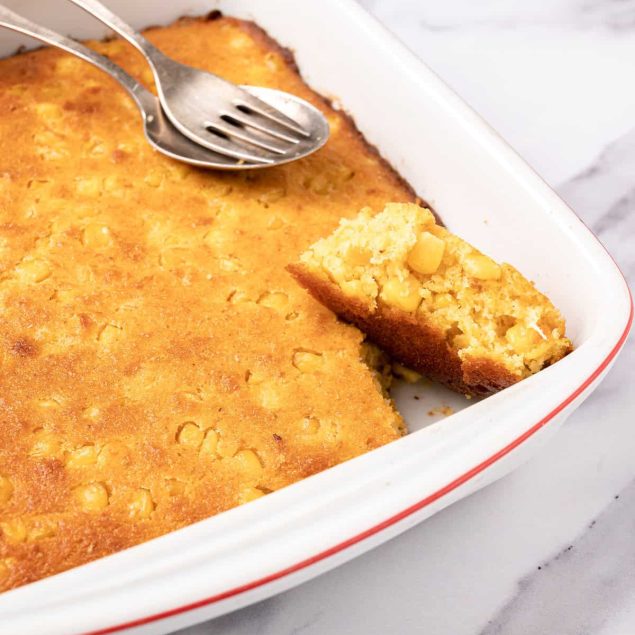
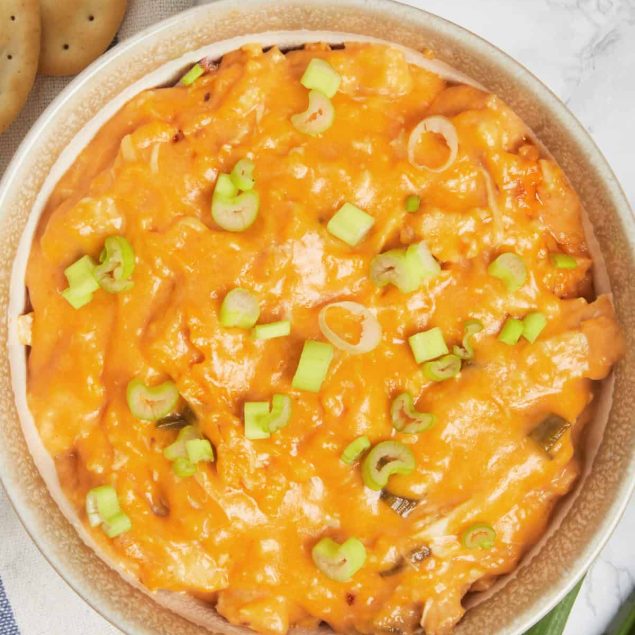
Leave a Comment